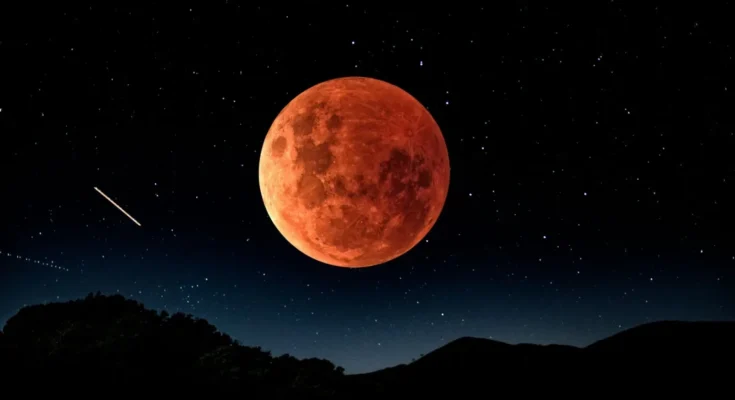On March 14, 2025, the world will witness an awe-inspiring celestial event as the Moon takes on a deep, eerie red hue during a total lunar eclipse. This rare phenomenon, known as a Blood Moon, occurs when the Earth moves directly between the Sun and the Moon, casting its shadow over the lunar surface and blocking direct sunlight from reaching it. However, due to the scattering of light in Earth’s atmosphere, only red wavelengths manage to pass through, giving the Moon its striking crimson glow.
The Blood Moon is a breathtaking spectacle that has captivated skywatchers and astronomers for centuries. Many cultures associate it with myths, prophecies, and spiritual significance. Scientifically, it provides an excellent opportunity to study Earth’s atmosphere and its effects on light. The reddish hue varies in intensity depending on the amount of dust, pollution, and cloud cover present in the atmosphere at the time of the eclipse.
Where and When to See the Blood Moon

This spectacular lunar event will be visible across various regions, including the United States, Canada, Mexico, Australia, the Philippines, the United Kingdom, Ireland, the Middle East, Europe, Africa, and other parts of the world. If you are located in these areas, be sure to step outside and look up at the night sky to witness this rare and mesmerizing occurrence.

The total lunar eclipse will unfold in stages, starting with the penumbral phase, where the Moon will begin to dim as it enters Earth’s outer shadow. This will be followed by the partial eclipse phase, during which a portion of the Moon will darken. Finally, the Moon will be completely engulfed in Earth’s shadow, creating the dramatic Blood Moon effect. This totality phase, the highlight of the event, will last for several minutes, offering ample time to observe its beauty.

How to Best View the Blood Moon

To fully enjoy this celestial marvel, consider the following tips:

- Find a Dark Location: Light pollution from city lights can hinder your view. Try to watch the eclipse from a location away from bright lights.
- Check the Weather: Clear skies provide the best viewing experience, so be sure to check the weather forecast in your area beforehand.
- Use Binoculars or a Telescope: While the Blood Moon is visible to the naked eye, using binoculars or a telescope can enhance the details of the lunar surface and the depth of the red hue.
- Capture the Moment: If you’re into photography, a DSLR camera with a telephoto lens or a smartphone with a night mode feature can help you snap stunning images of the eclipse.

Whether you are a seasoned stargazer or a casual observer, this Blood Moon is an event you won’t want to miss. Mark your calendar, gather your friends and family, and prepare to witness one of nature’s most magnificent spectacles on March 14, 2025. Don’t forget to share your experience and photographs with fellow sky enthusiasts!



